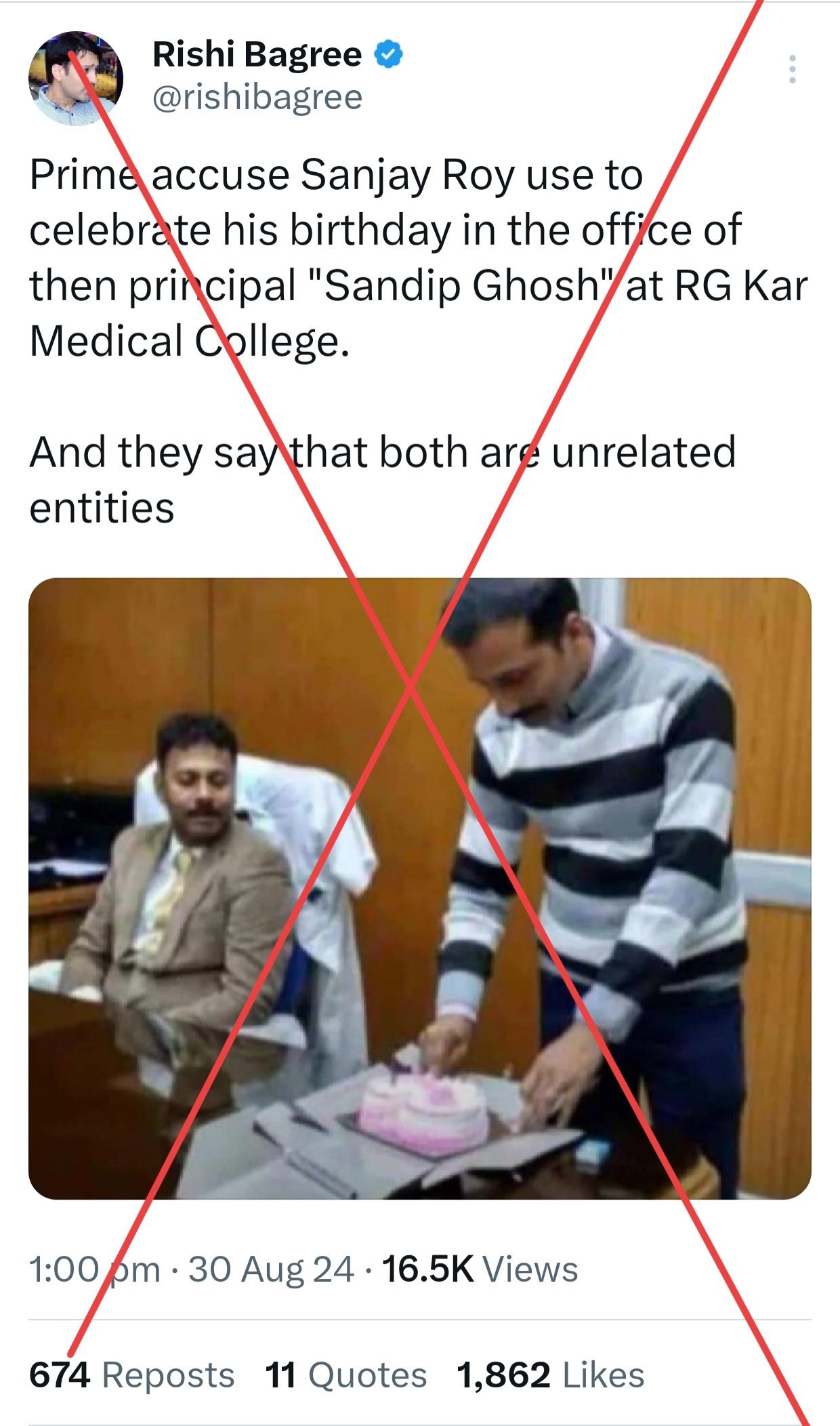This explainer provides a detailed overview of the situation, the types of misinformation being spread, and the actions being taken by authorities to address these issues and how Kolkata Police have intensified efforts to combat the spread of fake news and misinformation.
The Problem: Fake News and Misinformation
As protests at RG Kar Hospital have intensified, so has the spread of misleading information on social media. Several fake news items have been widely circulated, leading to public confusion and concern. Among the most notable examples:
- Fake Photograph: A photograph falsely claiming to show former RG Kar principal Sanjib Ghosh celebrating a birthday with the main accused, Sanjay Roy, has been widely shared. In reality, the photograph depicts Ghosh’s personal data operator, not Roy.
- Fake Death Certificate: A doctored death certificate purportedly belonging to an RG Kar doctor has also made the rounds. The police have confirmed that the original certificate is securely held by the doctor’s family and that the circulated version contains fake signatures.
Police Action: Notices and Investigations
In response to these incidents, the Kolkata Police have decided to issue notices to several social influencers and social media users who are believed to have spread these fake news items. As of Thursday evening, 320 individuals and entities have been summoned for questioning, with some facing similar actions as those seen in Bangladesh, where authorities have cracked down on misinformation.
The police are also investigating the creation of multiple fake accounts that impersonate reputable news outlets. These accounts have been used to disseminate false information, further complicating the situation. Investigators are working to identify the sources of these accounts, using VoIP addresses and other digital footprints.
The Role of AI in Misinformation
A new trend observed by investigators is the use of artificial intelligence (AI) to alter original videos and audio clips. AI technology is being used to manipulate content, including putting false words into the mouths of social influencers, thereby making the misinformation seem more credible. This marks a shift from the older methods of passing off outdated incidents as new.
Broader Implications: Social Responsibility and Media
The spread of fake news has highlighted the importance of responsible journalism and the need for accurate reporting, especially during times of social unrest. The article also touches on the role of media and judicial activism in addressing societal challenges. There is a call for balanced journalism that avoids selective reporting and instead promotes unity. One suggestion is the formation of a journalists’ organization dedicated to social responsibility, working in collaboration with social workers to ensure that news is reported accurately and in a manner that maintains public peace.
Conclusion
The situation at RG Kar Hospital serves as a stark reminder of the dangers posed by fake news and misinformation, particularly in the digital age. As the Kolkata Police continue their crackdown, it is crucial for social media users to exercise caution and verify the authenticity of the information they encounter and share. The responsibility for maintaining the integrity of information lies not only with authorities and media outlets but also with every individual who participates in online discussions.

